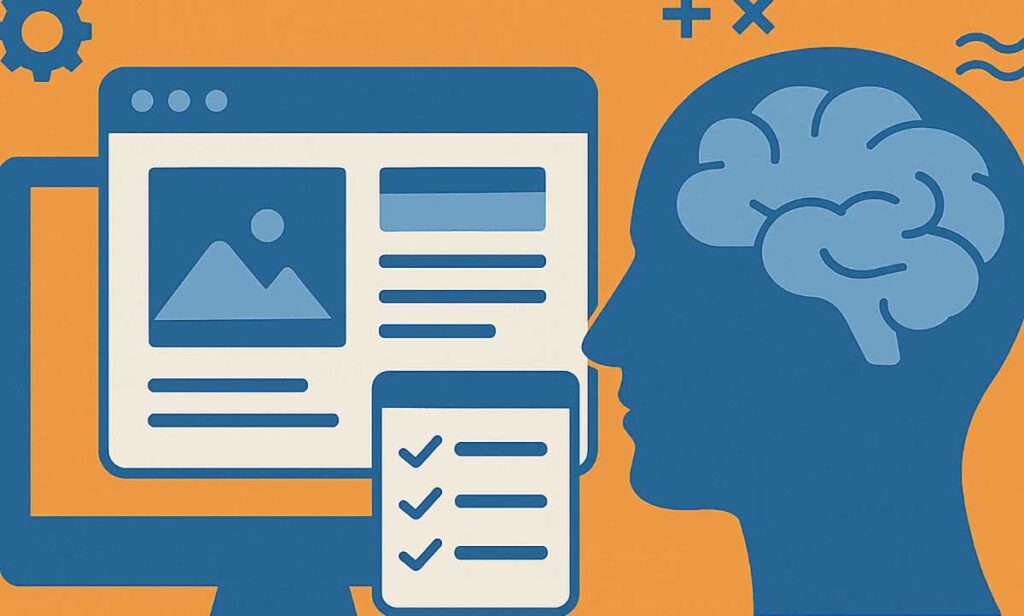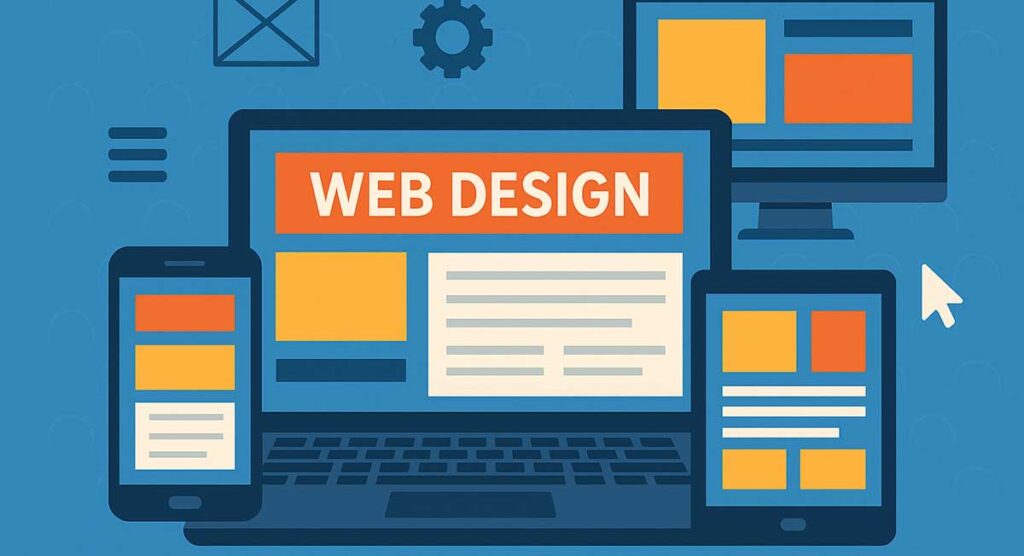Web design isn’t just about colours, grids, and responsive layouts; it’s about people. Every time someone lands on your website, their brain is working hard to process what they see. If the design feels overwhelming, cluttered, or confusing, their cognitive load spikes, and that’s when users drop off.
The goal of good design psychology is to make websites feel effortless to use. When users don’t have to think too much, they can focus on what really matters: engaging with your content and taking action.
What Is Cognitive Load in Web Design?
Cognitive load refers to the mental effort needed to process information. Think of it as the “bandwidth” of your users’ brains. When a site is clear and intuitive, the load is light, and users can focus on their goals. When a site is cluttered or complex, the load is heavy, and people give up.
According to Nielsen Norman Group, reducing unnecessary cognitive load is one of the most important principles in creating usable, human-centred designs.
Why Design Psychology Matters
Design psychology is about aligning your website with how people actually think and behave. It means respecting human limitations while guiding attention and decision-making.
- People don’t read web pages in full; they scan.
- Users follow predictable patterns (like the F-shaped reading pattern).
- Too many choices can lead to decision fatigue, resulting in inaction.
- Clear hierarchies help people feel confident in their choices.
In short: design psychology bridges the gap between what you want users to do and how their brains actually work.
Table: Types of Cognitive Load and How They Affect Websites
| Cognitive Load Type | What It Means | Example on a Website | How to Minimise It |
| Intrinsic | The natural complexity of the task itself | Reading a technical product spec | Break info into steps, use clear headings |
| Extraneous | Extra effort caused by poor design | Cluttered navigation menus | Simplify layout, remove distractions |
| Germane | Mental effort that helps learning | Comparing two product options | Use comparison tables, highlight differences |
Designers can’t remove intrinsic load entirely (some tasks are just complex), but we can reduce extraneous load and support germane load by presenting information clearly.
Ready for a Website That Works as Hard as You Do?
Your website is often the first impression customers have of your business. At Digital Hype, we design and build responsive, conversion-focused websites for businesses across Bournemouth, Poole, Dorset and UK-wide. Let’s create a site that not only looks great but also drives real results.
Contact Our Web Design TeamPractical Ways to Reduce Cognitive Load
- Simplify Navigation – Keep menus clear and concise. Limit main options to what matters most.
- Use Visual Hierarchy – Guide attention with size, contrast, and spacing. (See our article on visual hierarchy for practical tips.)
- Chunk Information – Break long content into short, scannable sections.
- Keep Consistency – Buttons, icons, and headings should follow a pattern across pages.
- Limit Choices – Offer fewer, clearer options to reduce decision fatigue.
- Optimise for Speed – Slow sites increase mental strain. Our SEO services tackle this with performance-focused optimisation.
Real-World Scenario
A Dorset-based SME approached us with a website that had grown cluttered over time. The homepage had six different CTAs, lengthy paragraphs of text, and inconsistent fonts. Users weren’t converting.
We redesigned with psychology in mind: simplified navigation, fewer CTAs, structured text blocks, and consistent design patterns. The result? Session times increased, bounce rates dropped, and conversions improved within weeks.
That’s the power of reducing cognitive load — it doesn’t just look better, it performs better.
FAQs
Q1. What is cognitive load in web design?
It’s the mental effort users need to understand and interact with a site. Lower load = smoother experience.
Q2. How do I know if my website is causing high cognitive load?
Clues include high bounce rates, short session times, or customer feedback saying your site feels “confusing” or “cluttered.”
Q3. What role does typography play in reducing cognitive load?
Huge. Clear headings, readable fonts, and consistent styles make scanning easier and lighten the mental load.
Q4. Can a website have too much information?
Yes. Overloading users with choices or lengthy content blocks makes decision-making more difficult. Break content down.
Q5. Does reducing cognitive load also help SEO?
Yes — clear, structured content improves usability, which in turn boosts dwell time and reduces bounce rates, both of which are positive SEO signals.
Q6. Should small businesses worry about cognitive load?
Absolutely. Even small sites benefit. Clean design can be the difference between a user calling you or clicking away.
Q7. How does cognitive load affect e-commerce websites?
Complex product pages or overloaded checkout forms increase drop-offs. Streamlined design = higher sales.
Q8. What’s the first step to improving my site’s psychology?
Audit your current site. Identify where users might get confused or overloaded. Then simplify.
Designing Websites That Think Like Users
At its heart, design psychology is about empathy. When you reduce cognitive load, you’re not just making your website prettier; you’re respecting your users’ time and attention.
For businesses in Bournemouth, Poole, Dorset, and across the UK, this means creating sites that not only look good but also work intuitively, guiding users towards meaningful action.
At Digital Hype, our web design services focus on clarity, our SEO expertise ensures performance, and our online marketing strategies tie it all together. Because a website that thinks like your users isn’t just good design, it’s good business.


